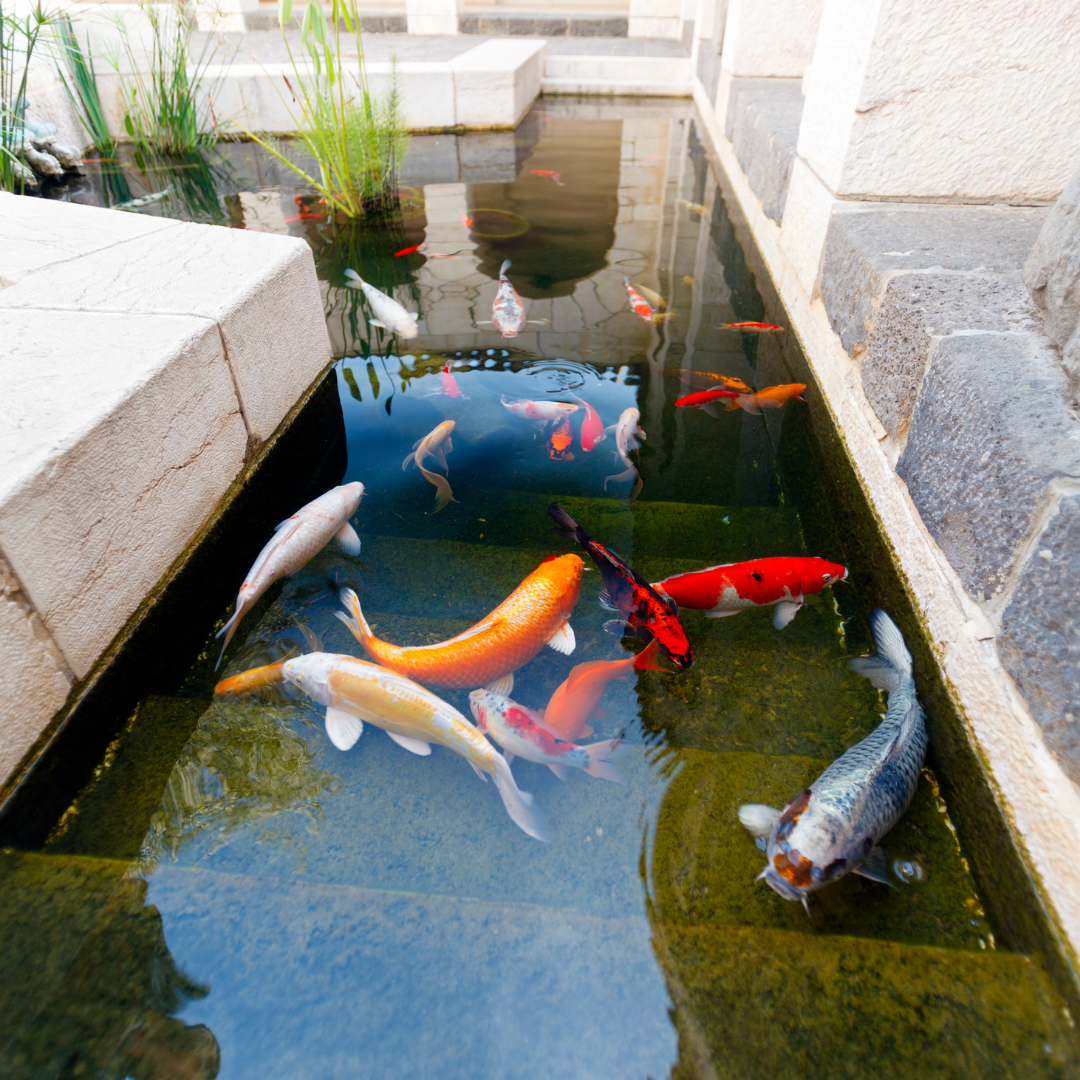
2021-10-14T09:49:32
Top 5 Tips for Perfect Koi Keeping 1. Koi fish food – ‘Garbage in, garbage out’ Choosing a high quality food might seem an extravagance but by doing so you are giving your fish the right nutrition to ensure they produce less waste. Ultimately if you give your fish good food they will digest more of it, produce less waste, and leave less for you to clean up! 2. Koi pond circulation There is a lot of emphasis placed on pond filtration. However, the filter is only as good as the water you provide it with. For every handful of food your fish consume they will give you 5 handfuls of waste – poo again, sorry! If that waste Is allowed to settle in your pond it will ‘reward’ you with a 100 handfuls of algae. So now, rather than dealing with 5 handfuls of fish poo, your filter is having to deal with 100 handfuls of algae, and guess who has to clean all that out! Improving circulation in your pond means those 5 handfuls of waste would quickly get transported back to your filter for processing. Great stuff. The only problem is that most of us look at the aesthetics of the pond first and rarely consider how water will move within it – this is called flow dynamics. The perfect shape for a pond is a hemisphere – imagine half a football. A hemisphere allows perfect circulation that guides all of the pond waste down to a central point. From here your pump can efficiently transport everything to the filter. Just like a wash basin. If all ponds were this shape, fish keeping would be a lot easier! However, no one really wants a pond that reminds them of a toilet bowl! Instead, formal rectangular ponds are favored by most of us simply because they fit with our formal gardens and are often easier to prepare for and construct. The issue with this is the shape creates areas where slow moving water can occur and deposit waste. This occurs to some extent in all irregularly shaped ponds. If you have the luxury of still being in the planning phase of your dream pond, consider rounding off any sharp corners in your rectangular pond, or smoothing out any sharp curves in your jelly mold design. Anything you can do to keep your water circulation as consistent as possible is beneficial. Above the water line you can make it as formal as you like, or indeed as mad as you like, but try and keep things calm and smooth below the water line. 3. Treating tap water for a koi pond There is a reason we don’t get goldfish popping out of taps. Well, there are many reasons but this one is as good as any. Tap water has chlorine in it. It’s there to protect us from bacteria and other microorganisms. We’ve all been in a swimming pool which we know has had too much chlorine in it because our eyes are stinging. For the same reason it is best not to put tap water into your pond without using a suitable treatment. Chlorine will burn your fish, it will also destroy your beloved filter bacteria. You can quite easily prevent the harmful effects of tap water by using a dechlorinating liquid commonly called tapsafe, aquasafe, fresh start, and a few others. Despite the dechlorinating options available you cannot get away from the fact that using them is adding chemicals to your pond. In our view they are necessary chemicals produced by companies that understand fish and pond keeping, but if you’re still uncomfortable using them there are alternatives. 4. Koi pond water – Testing, testing…. This will sound like a broken record sooner or later, but water testing is vital. If everyone tested their own water it would eliminate around 70% of the problems we see. Just 10 minutes once a week could save you hours of work, not to mention expense and possibly heart ache. “My water is fine, it’s crystal clear!” sound familiar? There are a lot of things we can’t see that are harmful to us, so your water may well be clear but don’t assume it is safe. Ammonia is colourless and is one of the biggest killers of fish. Customers who experience problems have often come to us when things have gotten really bad, and they have begun to lose fish. It’s a real battle to get things on an even keel again from that point. However, had they been testing weekly, they would have noticed conditions starting to deteriorate slowly in plenty of time and had time to act. 5. Pond filter – keep it clean! This one is short and sweet. You should be cleaning your filter once a week in the height of summer, once per fortnight in spring and autumn, then once per month over winter. Little and often is the key. It will take a lot less time if you are cleaning regularly. Also, don’t forget that your filter media must not touch tap water. Use water you’ve removed from the pond to do your cleaning. Many filters have a cleaning mechanism to make the process even easier. Some will even do it for you.

Have a question? Ask here!
Required fields are marked *